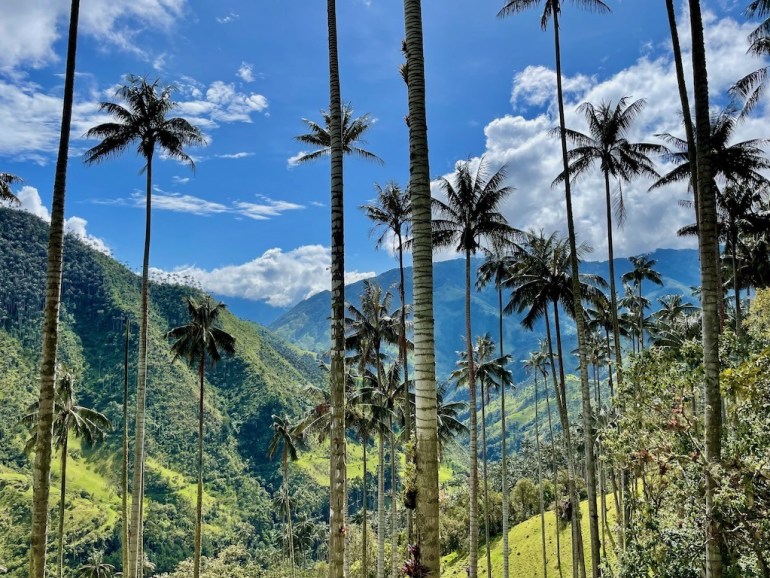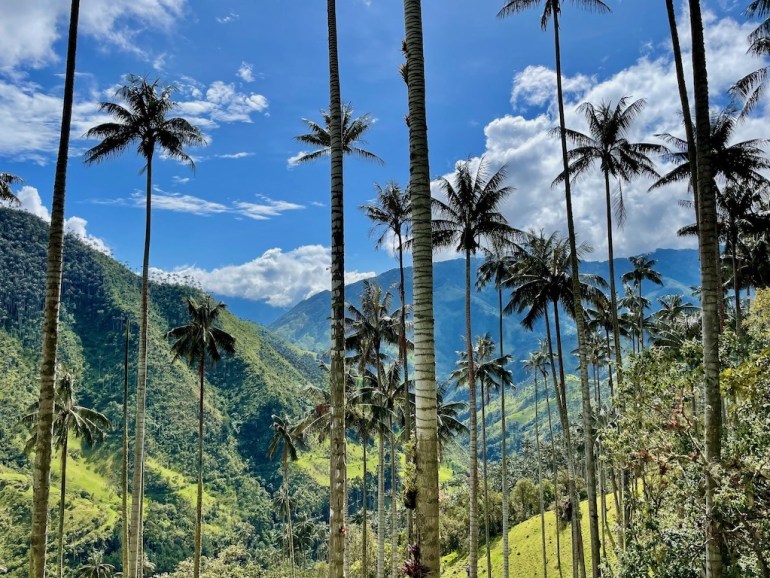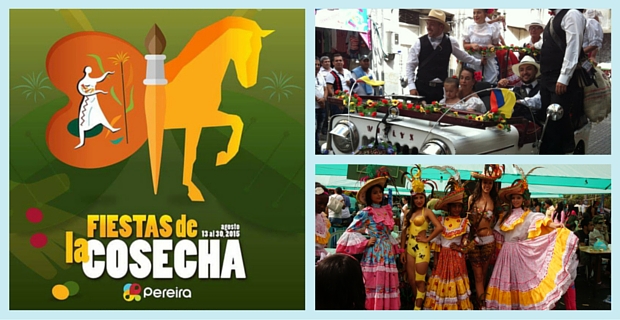Salento, Colombia: A Historian's Sabbatical in the Heart of Coffee Country

The late afternoon sun cast a golden glow on Salento as I arrived, painting the colonial architecture in hues of ochre and rose. The air, thick with the scent of roasting coffee, promised a sensory feast and a journey into the heart of Colombian history. The tranquility was palpable, a welcome balm after decades spent poring over dusty tomes. I, Dr. Eleanor Ainsworth, recently retired history professor, had embarked on a sabbatical, trading lecture halls for the vibrant streets of Salento, a town nestled in the verdant hills of Colombia’s Coffee Region. I came seeking respite, but I found so much more: a deep connection to the land, its people, and its rich, complex story.
Discovering Salento's Heart: Tejo and Fiestas
My immersion into Salento's culture began, perhaps surprisingly, with tejo, Colombia’s explosive national sport. The local cancha, a simple dirt court, was a hub of activity. The earthy smell of the tejo clay filled the air, punctuated by the satisfying boom of small explosions as players skillfully landed their metal pucks on targets filled with gunpowder. My attempts were, to put it mildly, clumsy. Amidst good-natured ribbing and encouraging cheers, I learned the basics. It was a far cry from academic debate, but a welcome lesson in humility and camaraderie.
My visit coincided with the "Fiestas de la Cosecha," the local coffee festival. The town square transformed into a kaleidoscope of vibrant costumes and infectious energy. Traditional dances filled the air, the most captivating being the danza del garabato, a symbolic battle between life and death. The palpable excitement was a testament to the town's deep connection to its coffee heritage. I sampled various coffee brews, each with its own unique character, and indulged in local pastries, savoring the sweetness and the spirit of celebration. This experience provided insight into how integral coffee is to both the culture and economy of the Coffee Triangle region of Colombia, a history I am now privileged to witness first-hand.
Protecting the Giants: The Wax Palms of Cocora Valley
One of the most profound experiences during my sabbatical has been a visit to a wax palm reforestation project near Salento. Stepping into the Cocora Valley is like entering another world. These towering trees, the national tree of Colombia (Ceroxylon quindiuense), stretch towards the sky like ancient sentinels. Their presence is both majestic and fragile, a stark reminder of the ecological challenges they face. The efforts to protect them are vital.

Historically, the wax palm held significance in Colombian culture, used for religious processions and as a valuable building material. The Quimbaya people, the original inhabitants of this land, undoubtedly had their own relationship with these iconic trees. Today, they are threatened by deforestation and disease. Witnessing the dedication of the conservationists filled me with hope.
Adventures in Salento: Horseback Riding, Coffee, and Arepas
Cocora Valley on Horseback: A Painterly Dream
A horseback riding excursion through the Cocora Valley offered a unique perspective on this breathtaking landscape. The early morning mist clung to the towering wax palms, creating an ethereal effect reminiscent of the paintings of Frederic Church and the Hudson River School.
The sound of the horses' hooves on the muddy trails was a rhythmic counterpoint to the stillness of the valley. Dwarfed by the sheer scale of the landscape, I felt a profound sense of awe, a feeling I had only previously experienced in front of the great cathedrals of Europe.
From Bean to Cup: A Coffee Plantation Tour at Finca El Ocaso
The Finca El Ocaso coffee plantation tour was an education in the meticulous art of coffee cultivation. From the vibrant red coffee cherries to the carefully sorted beans, I witnessed every step of the process. The earthy aroma of the coffee cherries filled the air, a scent that now evokes the spirit of Salento.
The pride of the local farmers was evident as they explained the varietales grown (primarily Castillo and Colombia) and the altitude at which they are cultivated (around 1800 meters above sea level). It was a privilege to witness their dedication to their craft, a craft that has shaped the identity of this region. Plan your tour to Finca El Ocaso today!
Arepas and Tradition: A Cooking Class Experience
My culinary adventure continued with a cooking class where I learned to make traditional arepas. Grinding the corn, feeling the warmth of the comal, and finally tasting the simple yet delicious result was incredibly rewarding. It was a tangible connection to the past, a reminder that some traditions endure through generations.
A Taste of Salento: Culinary Delights
Trucha al Ajillo at Brunch de Salento
Brunch de Salento is a must-visit for their exquisite trucha al ajillo. The trout is perfectly cooked, flaky and moist, and the rich garlic sauce is simply divine. The accompanying patacones (fried plantain slices) provide a satisfying crunch.
Bandeja Paisa at Restaurant Camino Real
No trip to the Coffee Region is complete without indulging in a bandeja paisa, the region’s iconic dish. At Restaurant Camino Real, they serve an excellent version, showcasing the regional variations with the inclusion of chorizo caldense and arepa de chócolo. Bandeja paisa typically consists of red beans cooked with pork, white rice, chicharrón, fried egg, plantain, chorizo, morcilla, arepa, avocado and hogao sauce. It is a hearty and flavorful meal that offers a true taste of the region.
Agua de Panela from a Roadside Vendor
The simple pleasure of enjoying agua de panela (unrefined whole cane sugar dissolved in water) from a roadside vendor is an experience in itself. The sweet, refreshing taste is perfect on a warm day, a reminder to savor the small moments of joy.
Salento's Historical Tapestry: Coffee, Culture, and Resilience
The story of Salento is inextricably linked to coffee. From its introduction in the 19th century to its current status as a UNESCO World Heritage site, coffee has shaped the landscape, the economy, and the identity of this region. Figures like Manuel Mejía Jaramillo, a key advocate for the Colombian coffee industry, played a pivotal role in its development.
The resilience of the people, their ability to adapt and thrive in the face of adversity, is a testament to their deep connection to the land. Understanding the historical context adds another layer of appreciation for the beauty and the spirit of Salento.
Accommodation Recommendations: Eco-Conscious Comfort and Budget-Friendly Charm
For an eco-conscious and luxurious stay, I recommend Hotel Salento Real Ecoresort. Their commitment to sustainability and their stunning views make it a truly special experience. For a budget-friendly option, Hostal Estrella de Agua offers a friendly atmosphere and a central location.
A Historian's Reflection: The Transformative Power of Travel

My sabbatical in Salento has been a transformative experience. Immersing myself in a new culture, connecting with the local people, and witnessing the beauty of the natural world has broadened my perspective in ways I never imagined. The Coffee Region offers an escape from the ordinary.
I encourage you to visit Salento and experience its beauty and hospitality for yourself. Explore the Cocora Valley, savor the local cuisine, and learn about the rich history of this remarkable region. As Gabriel Garcia Marquez, the great Colombian author, once said, "Memory is not what the heart desires, but what it cannot help." Let Salento create memories that you will cherish forever.